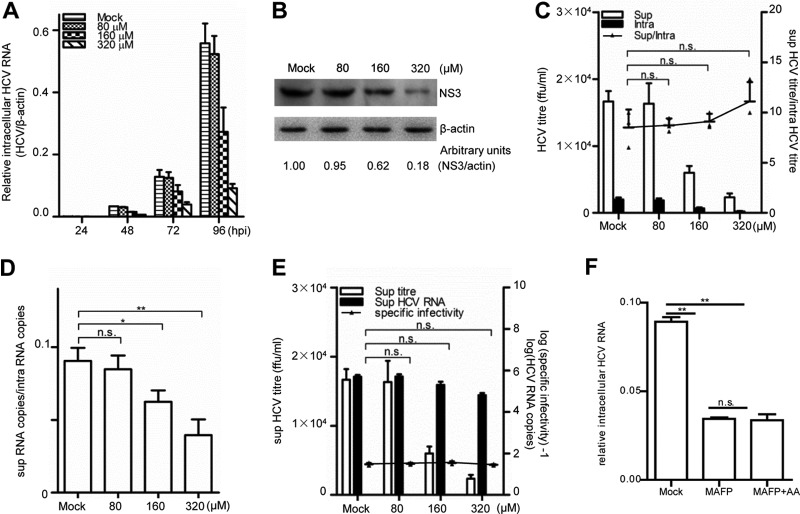Fig 3.
Inhibition of PLA2G4C decreases HCV replication. Huh7.5.1 cells were infected with HCV J399EM (MOI = 0.1) for 6 h before being incubated with MAFP at various concentrations. Intracellular HCV RNA (A) was measured at the indicated time points after HCV infection by quantitative RT-PCR. NS3 protein (B) was detected by Western blot assay at 96 h.p.i. The protein levels were quantified by densitometry, normalized against the beta-actin level, and expressed in arbitrary units. (C to E) The intracellular (intra) and supernatant (sup) HCV titers and the intracellular and supernatant HCV RNA levels at 96 h.p.i. were measured. The budding efficiency (sup HCV titer/intra HCV titer) (C), the assembly efficiency (sup HCV copies/intra HCV copies) (D), and the specific infectivity in the supernatant (sup HCV titer/sup HCV copies) (E) were calculated. The bars indicate the standard deviations of triplicates. (F) Huh7.5.1 cells were infected with HCVcc (MOI = 0.01) for 6 h before incubation with MAFP (160 μM) or MAFP (160 μM) and AA (50 μM). Total RNAs were extracted and submitted for quantitative RT-PCR determination of HCV RNA at 72 h.p.i. The statistically significant differences of the different groups (referred to as sup/intra or specific infectivity in panels C and E, respectively) are shown as * (P < 0.05), ** (P < 0.01), and n.s. (no significant difference).

